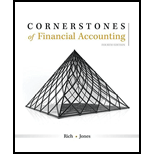
(a)
Efficiency ratio means:
The efficiency ratio is normally used to break down how well an organization utilizes its assets and liabilities inside. An efficiency ratio can figure the turnover of receivables, the reimbursement of liabilities, the amount and use of value, and the general utilization of stock and apparatus.
To compute:
Compute the assets efficiency ratios for Austin Logo Inc. for 2019 and 2018.
(b)
Profitability ratios are a class of budgetary measurements that are utilized to survey a business' capacity to create income in respect to its income, working costs, accounting report resources, and shareholders' equity after some time, utilizing information from a particular point in time.
To discuss:
Compute the profitability ratio for twisted for 2019 and 2018 also determine that how much Twised’s Profitability ratio changed or not.
(c)
A proportion of an organization’s debt to its absolute financing. The debt the board proportion estimates the amount of an organization’s tasks originates from debt rather than different types of financing, for example, stock or individual investment funds
To calculate:
Calculate the debt management ratios for twisted for 2018 and 2019. Discuss wether creditor are as secure in 2019 as they were in 2018.
Want to see the full answer?
Check out a sample textbook solution
Chapter 12 Solutions
Cornerstones of Financial Accounting
- What is the economic order quantity?arrow_forwardPLEASE help do thi correctlyarrow_forwardDuring FY 2005 Tenfold Manufacturinghad total manufacturing bycosts are $438,000. Their cost of goods manufactured for the year was $548,000. The January 1, 2006 balance of the Work-in-Process Inventory is $39,000. Use this information to determine the dollar amount of the FY 2005 beginning Work-in-Process Inventory.arrow_forward
- Natalie Systems had assets of $310,000 and liabilities of $165,000 at the beginning of the year. During the year, revenues were $158,000 and expenses were $102,000. Also, during the year the business paid the owners a dividend of $6,000, and assets increased by $18,000. What were Natalie's total liabilities at the end of the year?arrow_forwardQuartz Manufacturing completes job #715, which has a standard of 480 labor hours at a standard rate of $19.50 per hour. The job was completed in 510 hours and the actual average labor rate was $20.10 per hour. What is the labor rate variance? (A negative number indicates a favorable variance and a positive number indicates an unfavorable variance.)arrow_forwardI need help solving this general accounting question with the proper methodology.arrow_forward
 Cornerstones of Financial AccountingAccountingISBN:9781337690881Author:Jay Rich, Jeff JonesPublisher:Cengage LearningPrinciples of Accounting Volume 1AccountingISBN:9781947172685Author:OpenStaxPublisher:OpenStax College
Cornerstones of Financial AccountingAccountingISBN:9781337690881Author:Jay Rich, Jeff JonesPublisher:Cengage LearningPrinciples of Accounting Volume 1AccountingISBN:9781947172685Author:OpenStaxPublisher:OpenStax College Intermediate Financial Management (MindTap Course...FinanceISBN:9781337395083Author:Eugene F. Brigham, Phillip R. DavesPublisher:Cengage Learning
Intermediate Financial Management (MindTap Course...FinanceISBN:9781337395083Author:Eugene F. Brigham, Phillip R. DavesPublisher:Cengage Learning



